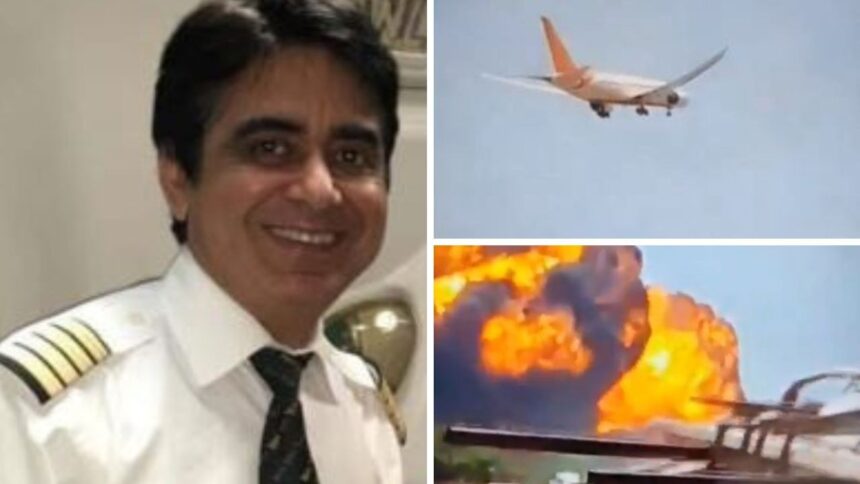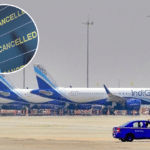AHMEDABAD, India – Air India Flight 171, a Boeing 787-8 Dreamliner, vanished from the skies above Ahmedabad and crashed into a residential neighbourhood just seconds after takeoff on June 12, 2025. With 260 lives lost, including 241 people on board and 19 on the ground, questions continue to surround what went wrong in those brief, chaotic moments.
The latest findings from India’s Aircraft Accident Investigation Bureau (AAIB) reveal that both engines lost power after the fuel control switches were moved to the “cutoff” position seconds after takeoff, cutting off fuel and causing a rapid loss of thrust. The possibility that this was done on purpose has raised tough questions for investigators, while Boeing’s reputation is also under the microscope.
Thirty Seconds of Disaster
Flight 171 left Sardar Vallabhbhai Patel International Airport at 13:39 IST, heading for London Gatwick. The weather was clear with light winds. Captain Sumeet Sabharwal, a veteran pilot with over 15,600 flight hours, was joined by First Officer Clive Kunder, who had more than 3,400 hours in the air.
The 11-year-old Boeing 787-8, with registration VT-ANB, was certified as airworthy and had a clean maintenance record, according to Air India Chairman N. Chandrasekaran.
The BBC reports, just three seconds after takeoff, flight data showed both fuel control switches being set from “RUN” to “CUTOFF” in less than a second, which cut fuel to the GE GEnx-1B engines. Cockpit voice recordings showed confusion as one pilot asked,
“Why did he cut off?” and the other answered, “I didn’t do it.” The report does not say who spoke those words. Kunder was at the controls, while Sabharwal handled systems and communications.
Seconds later, the switches were moved back to “RUN,” prompting the engines to try restarting. One engine began building thrust, but the other did not recover in time. The aircraft crashed into trees, a chimney, and a hostel just 625 feet above the ground and burst into flames.
Fuel Switches Under Scrutiny
The AAIB’s preliminary report, published July 12, 2025, has put the focus on the movement of the fuel switches. On the 787, these switches sit between the pilots’ seats, behind the throttles, and are designed to be hard to move by accident.
Each switch requires two actions: the pilot must lift it over a block, then slide it to “CUTOFF.” Metal guards on each side add another layer of security. Aviation safety expert Geoffrey Dell told CNN it would be very tough to move either switch by mistake.
Two main ideas have emerged: either the switches were moved by accident or it was moved on purpose. The Indian Commercial Pilots’ Association pushed back on the idea of a deliberate act by the flight crew, calling those claims “reckless and unfounded.”
Both pilots had nearly 9,000 combined hours on the 787 type and had rested before the flight. Captain Sabharwal was also an instructor, and Kunder had multiple type ratings. Colleagues described them as skilled professionals with strong track records.
Yet, the idea of an unintentional mistake cannot be ruled out. Aviation consultant Tim Atkinson, a former UK accident investigator, told Sky News that while it seems unlikely, pilots do operate fuel switches often at the end of a flight and muscle memory could come into play.
However, moving both switches during a critical takeoff phase would be highly unusual. The AAIB found no emergency, such as an engine fire or a bird strike, that would explain cutting fuel to both engines right after takeoff.
Some experts are looking at mechanical or electronic glitches. In 2018, the FAA flagged that some Boeing 737 fuel switches were fitted with disabled locking devices, making accidental movement possible.
The 787 uses the same design, including on the VT-ANB aircraft. The FAA, though, did not see this as a major risk and did not require airlines to act. Air India never ran the suggested checks. The aircraft’s throttle system, which houses the switches, was replaced in 2023 with no issues since. FAA and engineering experts say the past advisory does not relate to this crash.
What the Investigation Is Looking For
The AAIB, with help from Boeing, GE Aerospace, and the US NTSB, is thoroughly reviewing the wreckage, black box data, and all maintenance logs. The flight data recorder holds 49 hours of information, including engine performance and switch positions, while the voice recorder saves two hours of cockpit conversation.
Fuel samples from the auxiliary power unit and fueling systems came back clean, so contamination has been ruled out. The emergency Ram Air Turbine was deployed in the climb, showing there was a big systems failure, and the landing gear never retracted, a sign that the pilots had no time to troubleshoot.
Investigators are checking if the fuel switches could have been triggered by an electronic fault, but so far, no proof has surfaced. The AAIB confirmed the aircraft followed all airworthiness rules, and there were no signs of mechanical trouble or bird strikes.
India’s aviation authority ordered checks on fuel switch locks across Boeing fleets, and South Korea has done the same. Air India has finished safety checks on 26 of its 33 Dreamliners, without any new concerns.
Boeing’s Response and the Dreamliner’s Track Record
Boeing, still trying to win back trust after issues with its 737 Max, finds itself under pressure again. This crash marks the first fatal accident involving a 787 Dreamliner, a type that entered service in 2011 and has since flown more than a billion passengers.
Boeing President and CEO Kelly Ortberg expressed sympathy for the victims’ families and said the company is working with Air India and investigators. Ortberg cancelled his trip to the Paris Air Show to address the crisis. The NTSB and GE Aerospace stated they are supporting the probe and noted the AAIB has not recommended immediate changes for 787 operators or engine makers.
The 787 Dreamliner is popular for its advanced controls and fuel efficiency, and Air India has 33 in its fleet. Some are asking whether the crash shows a bigger issue, but experts say a flaw affecting all 787s would prompt quick action from regulators. As of now, there are no new safety advisories for the 787 or its engines.
Families and local communities hit by the crash continue to seek answers and demand strong measures to prevent future tragedies. Naresh Maheswari, who lost his son, called for accountability and better safety standards.
The government, led by Civil Aviation Minister Kinjarapu Ram Mohan Naidu, urged everyone to avoid speculation and wait for the final findings, expected to take up to a year.
Air India, now part of the Tata Group, has faced tough questions about its operations. The airline cut 15% of international widebody flights to carry out extra safety checks and set up a special trust to support those affected.
Chairman Chandrasekaran promised ongoing help for families. Still, the crash has put Air India’s maintenance under a spotlight, especially after reports that its budget airline, Air India Express, failed to keep proper records for A320 engine parts.
The investigation continues as the search for answers goes on. Investigators will look at simulator tests, debris analysis, and pilot histories to explain why the fuel switches moved to “CUTOFF.” The final AAIB report, due by mid-2026, will be closely watched. For now, the Flight 171 crash stands as a grim reminder of how a single error can have sweeping effects in aviation.














